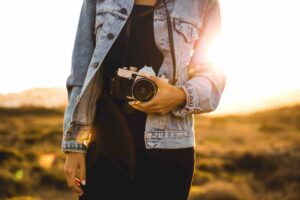A fast glimpse with any type of photography in fashion trend publication, or at the images on social sites like Flickr, verifies that white and black photography is as preferred as ever before. In the days of movie photography, you shot on white and black movie.
In this guide we operate via the most often made use of white and black sale techniques, laying out the benefits and drawbacks of each. Guidelines are offered Photoshop CS and if the method’s readily available, Photoshop Elements.
Transforming to white and black electronically has a variety of benefits. With movie, the white and black sale basically took place at the time of capturing. If you intended to alter the attributes of the white and black sale, you might just do it by positioning a tinted filter on the lens (a red filter, for example, makes blue skies much darker).
Now, by beginning with a colour photo and changing it to white and black in Photoshop, you have catbird seat over the sale. Dimming a blue sky is simple, as soon as you understand exactly how, and you could determine specifically how dark you prefer it to be.
The best video cameras for white and black photography are electronic SLRs. In your RAW sale software application, outcome the photo as a 16 part Tiff data.
The majority of electronic SLRs (and some compacts) have a white and black method. The video camera is making the sale for you, and the outcomes are normally bad, providing level, eradicated pictures. Prevent this method, and make use of the adhering to strategies rather.
An easy glimpse with any type of photography or style journal, or at the images on social web sites like Flickr, verifies that white and black photography is as prominent as ever before. In the days of movie photography, you shot on white and black movie. The best video cameras for white and black photography are electronic SLRs.
Method 1: Greyscale Conversion
Goto Image > Mode > Greyscale, (new window will appear) click ‘Discard’.
The above simple step will convert your image to black and white, but you will not have control over the conversion.
Method 2: Hue/ Saturation
Goto Layer > New Adjustment Layer > Hue/ Saturation, Click Ok. A new window appears, bring saturation slider to -100 and Click Ok.
Following the above simple steps again you can convert your image to black and white.
Difference between greyscale and Hue/ Saturation is… in Hue/ Saturation new Layer will be formed while in greyscale conversion no new layer is formed.
But again in Hue/ Saturation ypu will not have control over the Conversion.
Method 3: Lab Color
Goto Image > Mode > Lab color ( It records brightness and color values separately), Goto Window > Channel, select lightness channel. and again goto Image> Mode > Grayscale. Click Ok.
Lab color gives better conversion than Grayscale but again you will not have control over the conversion.
Method 4: Gradient Map
Set foreground and background color to black and white ‘press D’. Then Goto Layer > New Adjustment Layer > Gradient Map, Click Ok.
Method 5: Channel Mixer
Goto Layer > New Adjustment Layer > Channel Mixer, Click ‘Ok’ to form new layer. Check monochrome box. Move the Red, Green and Blue sliders to the left and right to lighten and darken different tones in the photo. The total of the three sliders should be 100% at all times.
In this method you have some level of control over the black and white conversion.
Method 6: Black and White Adjustment Layer
Goto Layer > New Adjustment Layer > Black and White, Click ‘Ok’. Black and white toolbox appears. Move the six colour sliders right or left to brighten or darken the respective tones in the photo. You can also choose from the presets in the drop down menu at the top.
If you want to adjust the brightness of something in the photo, simply click on the area in the photo and, while still holding down your mouse button, drag your mouse to the right to lighten the tones under the cursor, or left to darken them.
So, as compare to other methods this method gives you more control over the black and white conversion.














